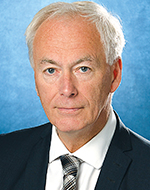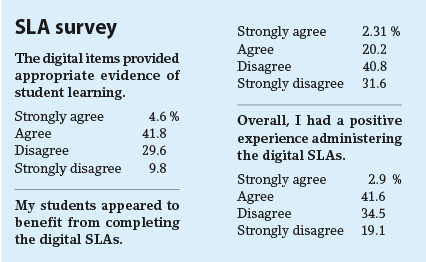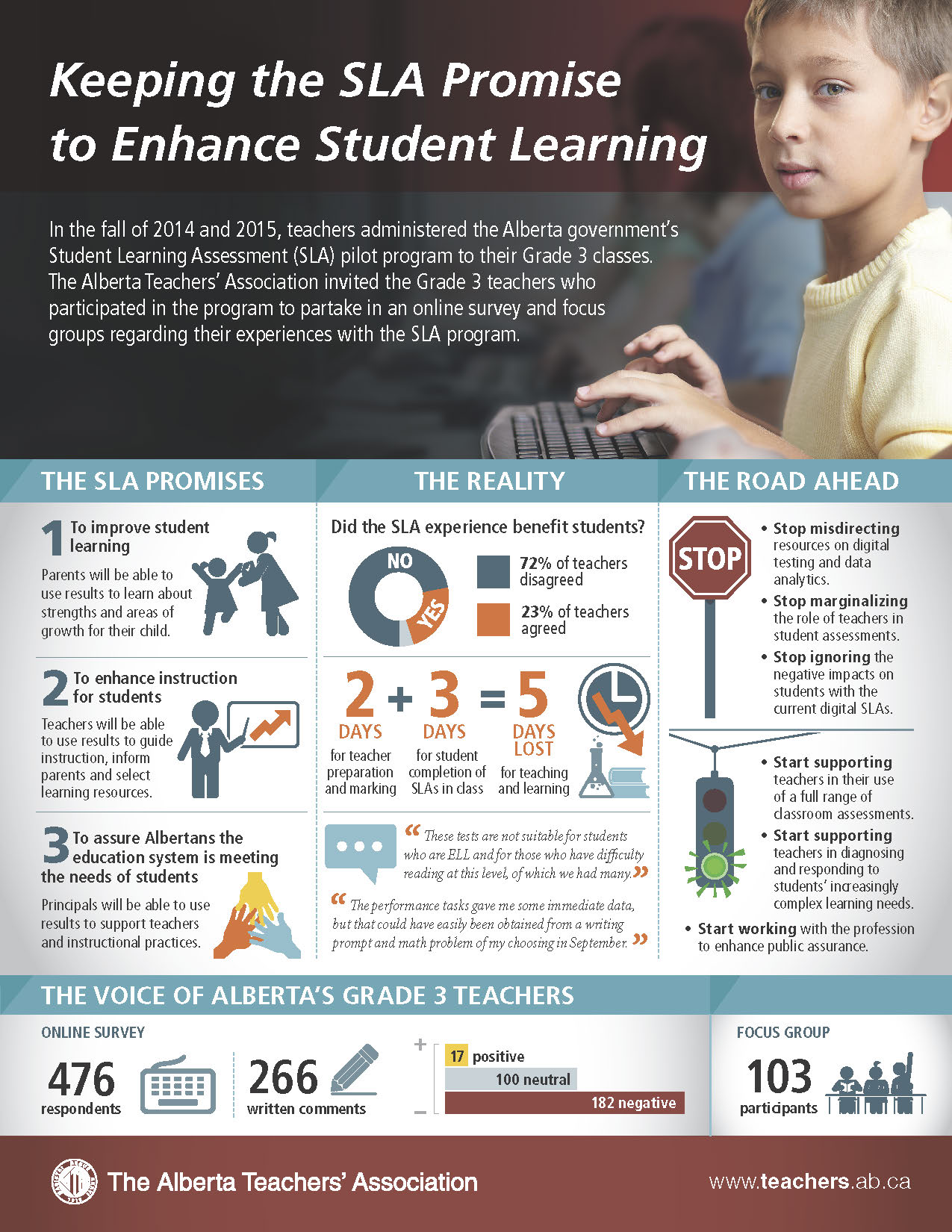Page Content
Governance gap?
The (re)intensification of teachers' work in Alberta
 The promise that the newly elected NDP government might begin to address the unsustainable working conditions and diminishment of teachers' professional autonomy has so far been unfulfilled. While it is true that the new minister and his government are six months into their mandate and despite some effort to stabilize education funding, the Association's own ongoing monitoring of teaching and learning conditions provides few indicators of hope. Furthermore, more recent developments, such as the bewildering decision by Alberta school authorities to mandate participation in the provincial pilot of the Grade 3 Student Learning Assessments (SLAs), are symptomatic of a deeper malaise in leadership and governance.
The promise that the newly elected NDP government might begin to address the unsustainable working conditions and diminishment of teachers' professional autonomy has so far been unfulfilled. While it is true that the new minister and his government are six months into their mandate and despite some effort to stabilize education funding, the Association's own ongoing monitoring of teaching and learning conditions provides few indicators of hope. Furthermore, more recent developments, such as the bewildering decision by Alberta school authorities to mandate participation in the provincial pilot of the Grade 3 Student Learning Assessments (SLAs), are symptomatic of a deeper malaise in leadership and governance.
Teacher burnout and the failure to lead
"What started out as a promise for assessment supports for teachers has turned into a focus on gathering unusable data on literacy and numeracy performance through the inappropriate use of an online testing platform. Sadly the SLAs have become a contorted back-to-the basics 21st century project driven by a bloated bureaucracy enabled by compliant district leadership."
Grade 3 teacher (SLA focus group, Oct. 28, 2015)
As students streamed back to school this fall, the government continued to roll out the pilot of the SLAs that would eventually involve approximately 2,000 Grade 3 teachers and their 40,000 students. This fall's pilot, described by Association President Mark Ramsankar as "a well-intended initiative that has gone off the rails" has not only significantly added to teachers' workload and disrupted the start-up of the school year for Grade 3 students, it has significantly diminished the professional autonomy of Alberta teachers. Initial data collected from an Association survey of Grade 3 teachers indicates the administration of SLAs has at a minimum consumed two full days of class time including time for preparation and administration of the digital items and the performance assessments, with marginal benefit to students and teachers.
What remains perplexing is the unwillingness of ministry officials to follow through on the foundational principles that established the original SLA program. The current SLA program promoted by ministry staff focuses largely on the development and delivery of digital multiple choice questions focused on generating downstream psychometric data for analysis by ministry officials. While teachers and the Association have been calling for support in the development and use of performance assessments, the ministry staff continue to head down the path of digital item development that feeds the cottage industry of psychometric analysis but does little to support classroom instruction and student learning.
Instead, the Association supports the Alberta Assessment Consortium's (AAC) vision of a robust formative assessment program developed in a public assurance model project based on performance assessments that support the professional learning of teachers to enhance student learning (AAC, 2012).
The minister's decision to allow school authorities to decide upon participation in the SLA pilot resulted, predictably, in most Alberta school boards mandating universal participation. This decision reflects a long-standing systemic refusal to acknowledge the workload and professional practice issues facing Alberta teachers.
The decision by Alberta school authorities to mandate universal participation in the SLA initiative displays a wilful disregard of the widely circulated research that shows that Alberta teachers are currently working more hours than any other teachers surveyed by the OECD except for their colleagues in Japan1. Meanwhile, Alberta's classrooms are twice as likely as schools globally to include a significant number of students with exceptionalities (51 per cent versus 26 per cent). Forty-one per cent of Alberta classrooms include significant populations of students learning in a second language, compared with 21 per cent internationally.
In terms of professional capacity and teacher efficacy, 32 per cent of Alberta teachers report that they have little control over their work lives, and 72 per cent report high levels of conflict between their working life and their personal time. One key reason that teachers report a decline in their professional autonomy is that they are seldom consulted about the acquisition of new technologies, especially those used to track and report on student progress (Duxbury and Higgins 2013).
Ongoing Association research points to ill-considered and unsupported technology acquisitions as the number two source of increased teacher workload behind the lack of support for students with exceptionalities. The sad irony here is that too often classroom complexity and diversity in Alberta classrooms (currently one of the highest levels of OECD jurisdictions) is seen as a rationale for investing in questionable "support" technologies rather than reducing class size and/or providing interventions and support for students with exceptionalities.
Unfortunately, this pattern is identified in school authorities' decisions related to the acquisition of digital reporting tools and other technology acquisitions.
The Association collaborated with the University of Alberta on three research studies on the impact of digital reporting and assessment tools. Conducted in 2008, 2011 and 2014, these studies carefully charted consistent and amplifying trends and patterns that show the increasingly negative impact of digital reporting tools on teachers, along with a strong sense of the diminishing value of these tools.
The most recent study found that nearly two-thirds of Alberta teachers reported that digital reporting tools like PowerSchool and TeacherLogic have not improved the level of instruction and assessment in classrooms2.
The same proportion of teachers also indicated that the tools have had a significant impact on their workload. As Jason Daniels, one of the researchers, observed, the study "found that digital reporting tools are inflexible and have been mandated on teachers with very little consultation and poor provisioning of professional development and technological support."
Perhaps the most disconcerting finding in the most recent research is that 93 per cent of Alberta teachers in this large provincial study had not been involved in the selection of the systems or asked about the value or impact of these expensive tools on instruction, assessment, teacher work lives or parental expectations around reporting.
Time for courageous leadership
The actions and policies of Alberta school authorities and their senior leaders continue to ignore the impact on teachers' conditions of practice as well as the growing complexity and diversity of classrooms, a situation that's symptomatic of what Hargreaves and Fullan (2012) call the "business capital" model of leadership. This is an approach to educational decision making that focuses on standardization, compliance and the ill-considered acquisition and implementation of technological innovations. A full analysis of the drivers and impact of this approach is outlined in numerous publications supporting the Association's A Great School for All 12-point plan for educational development, most recently Renewing Alberta's Promise: A Great School for All (2015).3
It is time for the newly elected government to renew a commitment to optimal conditions of practice for Alberta teachers and to trust in their collective professional autonomy. However, the Association is not simply waiting for district or provincial leaders to respond.
As well as the continued advocacy and lobbying efforts of Provincial Executive Council, the Association has undertaken, for the past year, a major research effort aimed at better understanding the complex relationship between the government, school authorities and the senior leadership of school districts. This study, focused on the role of the superintendent in terms of supporting teacher efficacy and the capacity of the teaching profession, will be a priority in the coming months.
Combining this study with other research activity, the Association continues to build the case that educational development in the province must be driven by sound evidence and a commitment to building the collective professional capacity and autonomy of the profession to meet the increasing complexity of Alberta's classrooms.
References
Alberta Assessment Consortium (AAC). 2012. A New Look at Public Assurance: Imagining the Possibilities for Alberta Schools. Edmonton, Alta: AAC.
Alberta Teachers' Association (ATA). 2014. Digital Reporting and Digital Assessment Tools: Evaluating their Value and their Impact. Edmonton, Alta: ATA. Also available at http://www.teachers.ab.ca/SiteCollectionDocuments/ATA/Publications/Research/COOR-101-1%20Digital%20Reporting.pdf (accessed November 10, 2016).
Duxbury, L., and C. Higgins. 2013. The 2011/12 National Study on Balancing Work, Life and Care Giving: The Situation for Alberta Teachers. Edmonton, Alta: ATA. http://www.teachers.ab.ca/SiteCollectionDocuments/ATA/Publications/Research/COOR-94%20National%20Study%20on%20Balancing%20Work%20-Duxbury.pdf (accessed November 9, 2015).
Hargreaves, A., and M. Fullan. 2012. Professional Capital: Transforming Teaching in Every School. New York: Teachers College Press.
Dr. J-C Couture is the associate co-ordinator of research for the Alberta Teachers' Association.

 SLA Infographic
SLA Infographic
Keeping the SLA Promise to Enhance Student Learning
